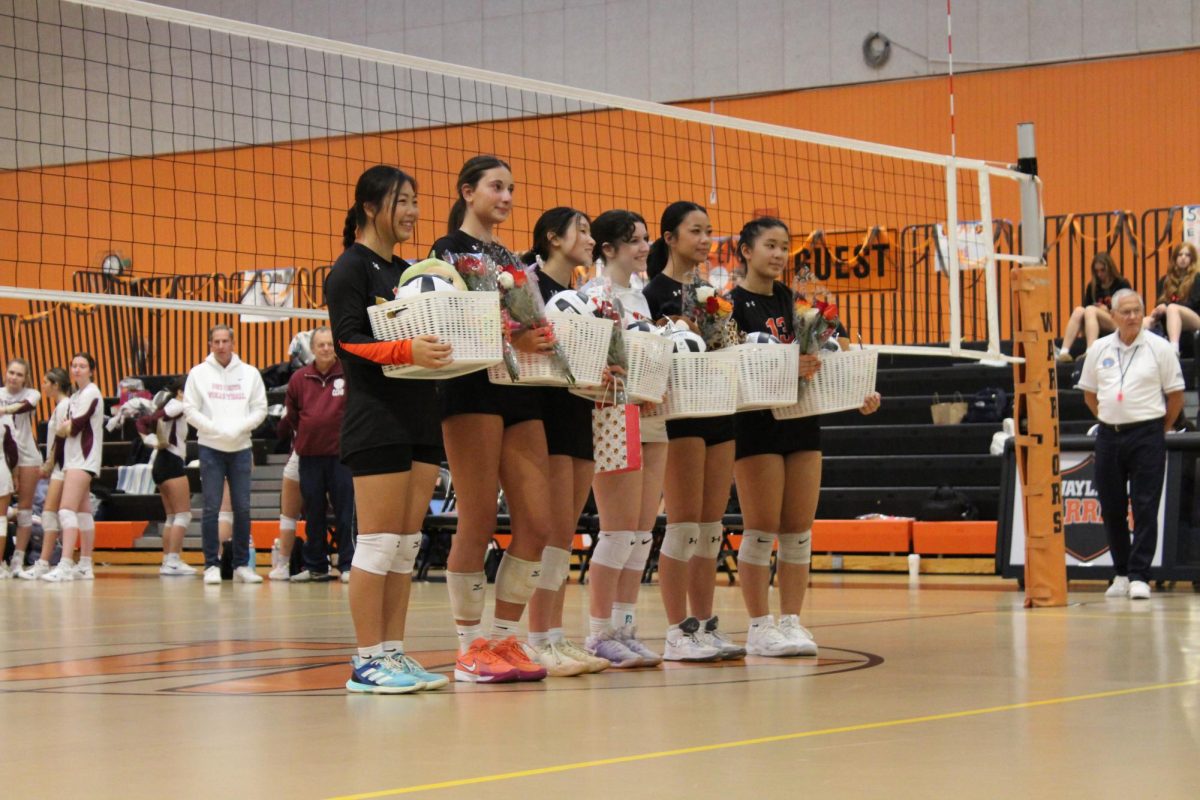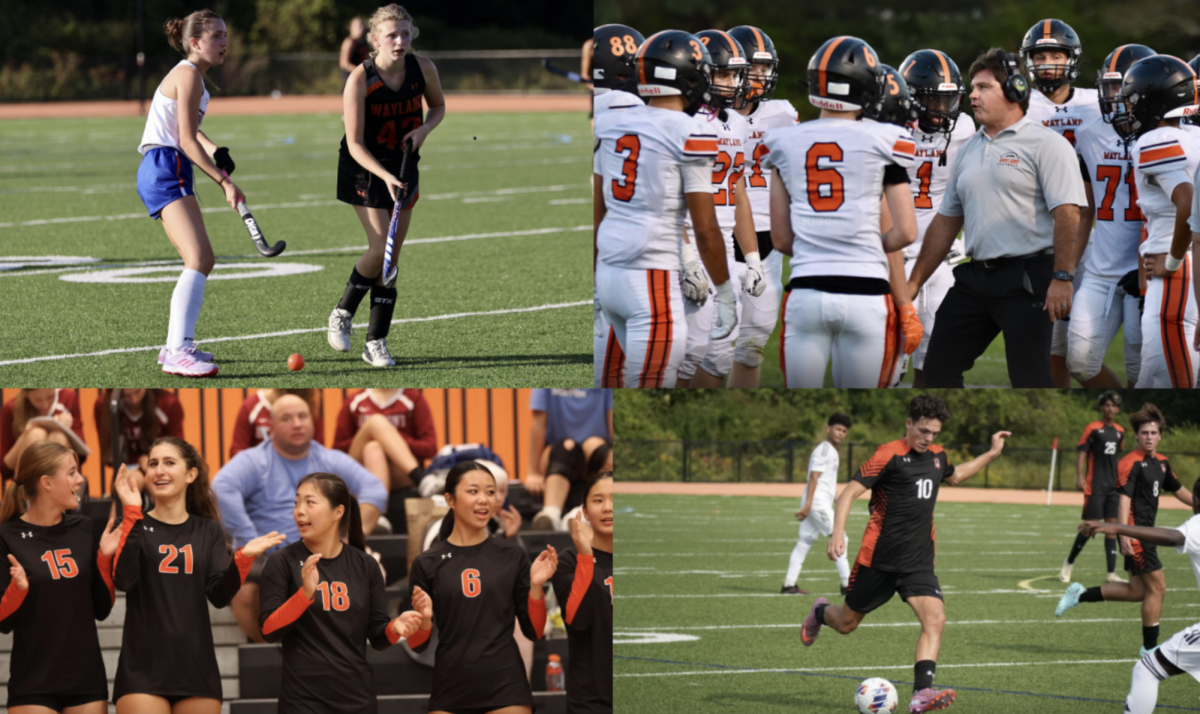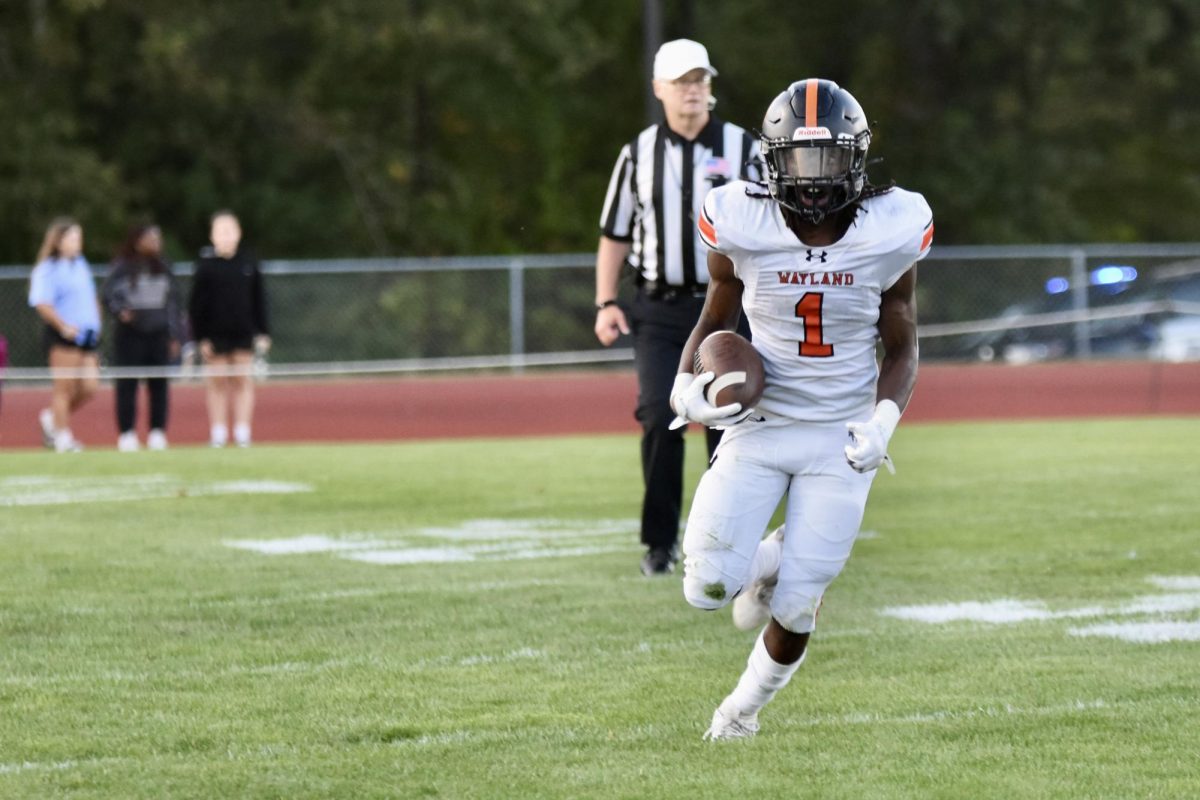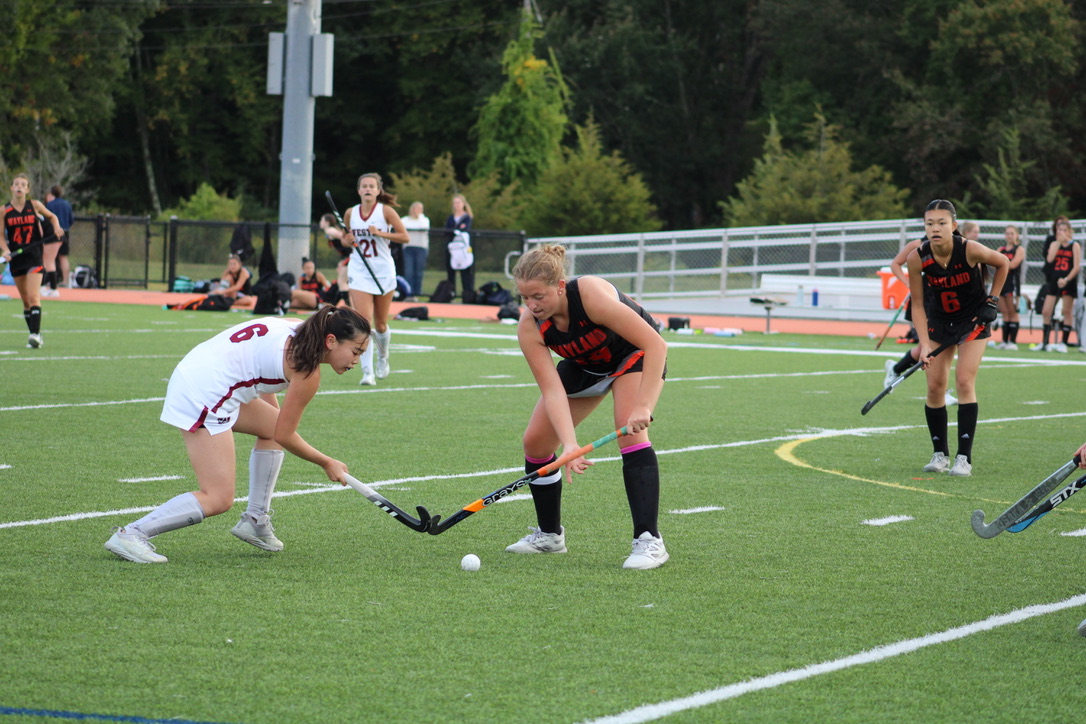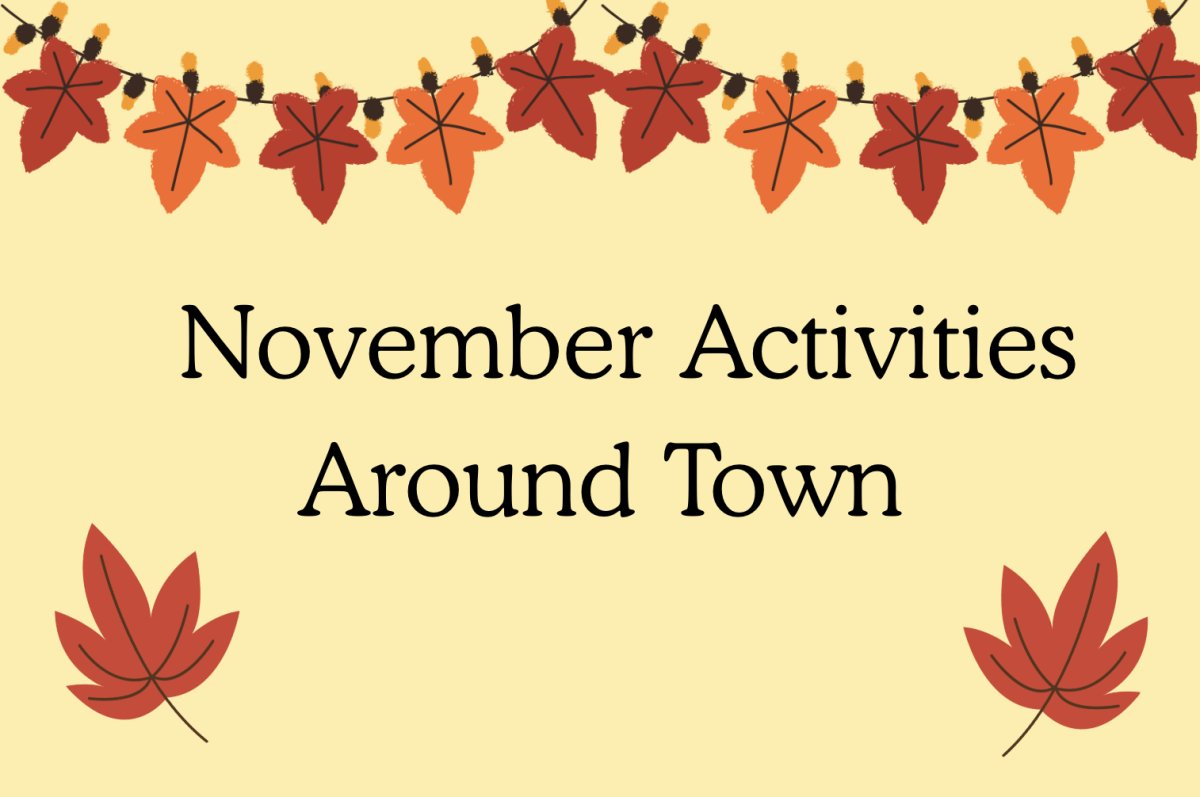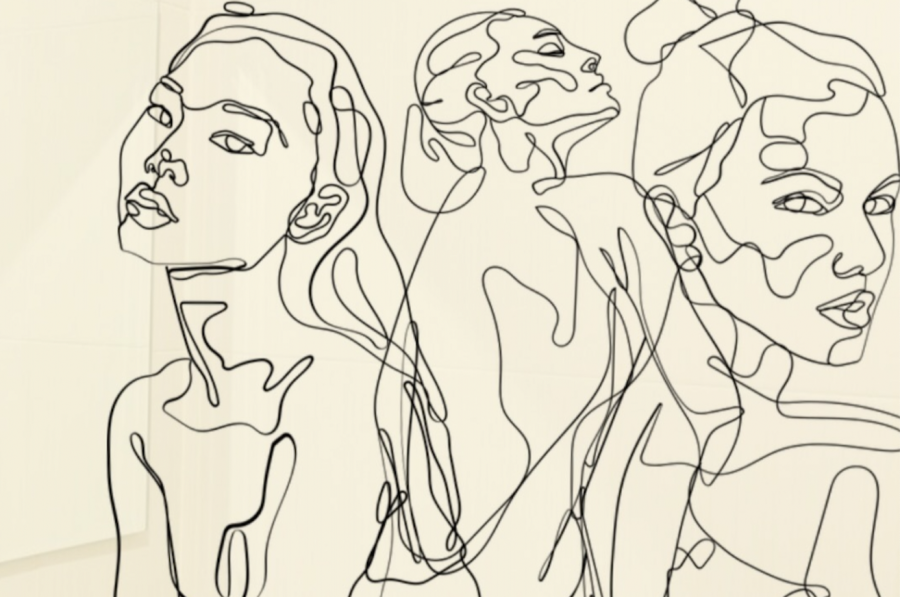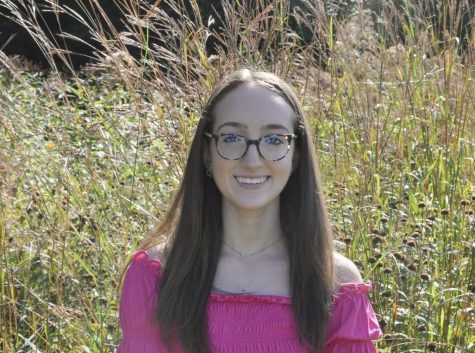Opinion: Wayland’s culture of body image and eating disorders
Credit: Taylor McGuire
WSPN’s Emily Roberge discusses body image struggles and eating disorders among Wayland High School students.
January 29, 2022
This article contains anonymous quotes from Wayland High School students about their opinions on body image.
Although society tries to normalize it, there is a stigma to the way an individual’s body is “supposed” to look. Those who identify as male are expected to be burly and strong while those who identify as females are wrongfully thought to be “perfect” as thin and petite. Not only are these false and very unrealistic expectations, they are detrimental to young teenagers who are already struggling with enough insecurities in their lives.
Body image is a multifaceted discussion, as no person will ever be completely satisfied with themselves when they look into the mirror. It’s much easier to point out the things you want to change about yourself than the things you actually like. For example, I challenge you to think to yourself how much time you dedicate to thinking about your flaws versus how much time you think about what you love about yourself. For most of us, it’s not the latter that we dedicate most of our time thinking about. And although it shouldn’t be this way, we’re not alone in our thinking.
In fact, the results of the 2019 MetroWest Adolescent Health survey are depressing, but they are not surprising. I don’t want to flood you with statistics that invalidate the personal experiences of those living through difficulties of accepting their body or eating disorders, but this is very telling. In the spring of 2019, the results for Wayland in Figure 7-1A revealed in the weight perception category that 50.4% of 386 females were trying to lose weight, and 24.2% of males were trying to lose weight. Do the math, and you will realize that over half of those who identify as females who responded feel the need to lose weight. That’s a great margin.
One important thing to recognize here is that this data is pre-COVID-19. We don’t have any newer results, so this is what we’re working with. Not only has COVID-19 affected everyone’s lives in some way, but COVID-19 has exacerbated the number of individuals with body image issues and eating disorders. For many, the quarantine represented a time of an absolutely changed schedule. We went from a go-go-go day of long hours of school and work to whipped coffee, Zoom calls, Joe Exotic’s “Tiger King” and hours of scrolling through TikTok.
On TikTok, the social media algorithm places influencers with “perfect lives” and “dream bodies” on viewers’ feeds. Watching these influencers all day has numerous harmful effects. Viewers find them asking themselves “why don’t I look like this?” and “what can I do to look like this?”
To truly understand, we must take the impact of the pandemic into consideration.
“I think the pandemic has opened up so many more conversations,” junior Piper Cinti said. “I think eating disorders always been here, we just didn’t have a way to have this conversation before.”
When scrolling through my social media apps like Tik Tok and Instagram, I have stumbled upon individual’s bravely sharing their stories of their recovery and journey with eating disorders and body image issues. Although there were some very uplifting and positive comments from supporters and those who have gone through similar experiences, there were also a decent amount of comments that left me stunned.
Of course anything that you post for the world to see will receive some negative criticism, but some reactions were absolutely disgusting. “Just eat, it’s that simple,” and “why would you ever get yourself to this point” were comments I saw, and they sum up the stigma that many feel towards eating disorders. An eating disorder it is not a choice, and these comments oversimplify the chemical imbalances that contribute to eating disorders. We can only create a strong support system for those who need it by understanding that it is more complex than we think. We need to uplift each other rather than tear each other apart, so don’t make assumptions about people if you may not know what they’re truly going through.
Another common misconception is that eating disorders and body image issues only apply to those who identify as female; however, this is far from the truth. According to the National Eating Disorders Association, up to 25% of individuals with anorexia are those who identify as male. Just because the conversations about men with body image and eating disorders aren’t as frequent, this doesn’t mean they aren’t struggling behind closed doors. In fact, there is a stigma where many people assume men don’t have eating disorders which is blatantly wrong. It may even be harder for males to speak out if they believe they are alone, but they are definitely not.
“Many men struggle with body image issues, but many just don’t talk about it,” an anonymous student said. “I believe that many men just don’t talk about their insecurities because they don’t want to be seen as weak. I do know a fair amount of males at WHS that do struggle with body image issues.”
I interviewed students to give personalized responses to the culture of body image and eating disorders within our community. To protect the identity of these students, their names will remain anonymous regarding their responses. These are personal responses, so they are not representative of the entire WHS community. However, they do say a lot about WHS.
“I think because of the normalization of body image and eating disorders within Wayland, [there’s] a lack of awareness and support around those subjects,” an anonymous student said. “I sadly do think that it is normal to have body image problems and eating disorders within Wayland.”
Another student reiterates their perceived prevalence of eating disorders in Wayland.
“I probably know more girls who have or had an eating disorder than I know who haven’t,” an anonymous student said.
With the prevalence, one student doesn’t think this problem is based off of resources. Rather, they believe the hardest part is admitting to the issue and seeking help.
“I don’t think that a lack of resources is a problem, I think that admitting there is a problem is a problem,” an anonymous student said. “Asking for help is the worst part. Accepting help, although it’s the last thing you want to do, is also the best thing you can do for yourself and your happiness.”
Another student gives their input about the difference between the terms “disordered eating” and “eating disorders.”
“I think that many people struggle with eating disorders in high school; however, I think that there can be a sort of gray area between disordered eating and eating disorders,” an anonymous student said. “I think that both of them matter and definitely need to be attended to, but I also think the term ‘eating disorder’ gets thrown around a lot.”
Now, where do we go from here? Admitting that you have an eating disorder is hard enough, but the next step poses a challenge as resources can be more limited, especially during COVID-19. Cinti, who teaches a curriculum to freshmen and sophomores about her journey with mental health and eating disorders, filled me in on challenges when utilizing resources like therapy.
“I think as much as I wish people [were using the resources], I don’t think they really know there are resources,” Cinti said. “It’s also very expensive [to go to therapy], and since COVID-19, it’s been really hard to get into a support group as so many people need it.”
Wayland, let’s continue the conversation about body image and eating disorders to better support those who need it.











